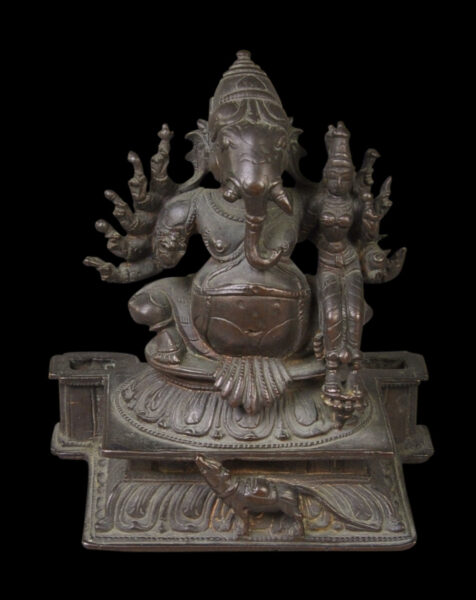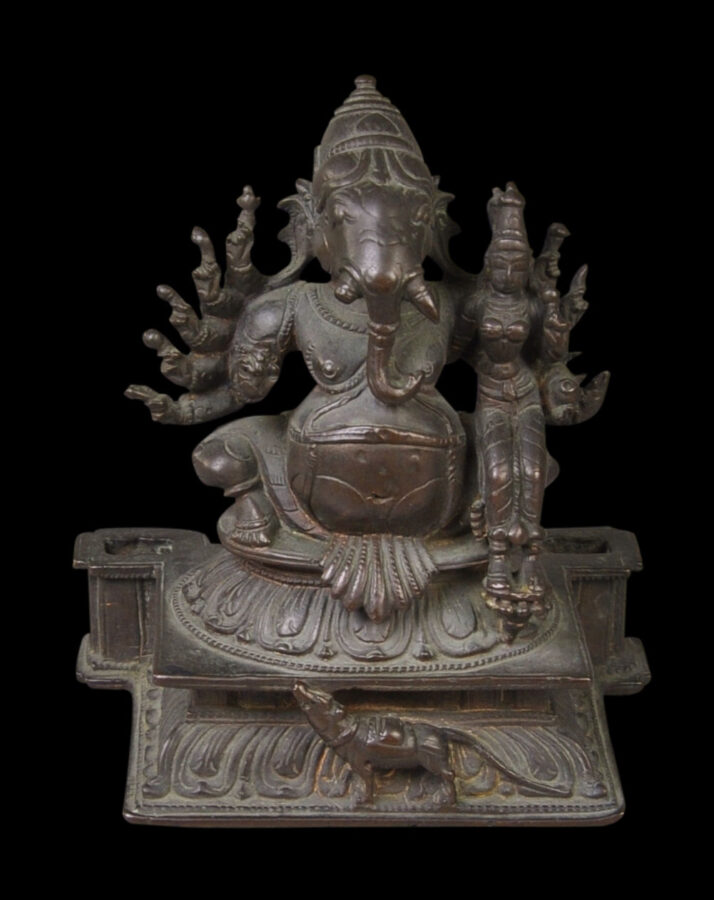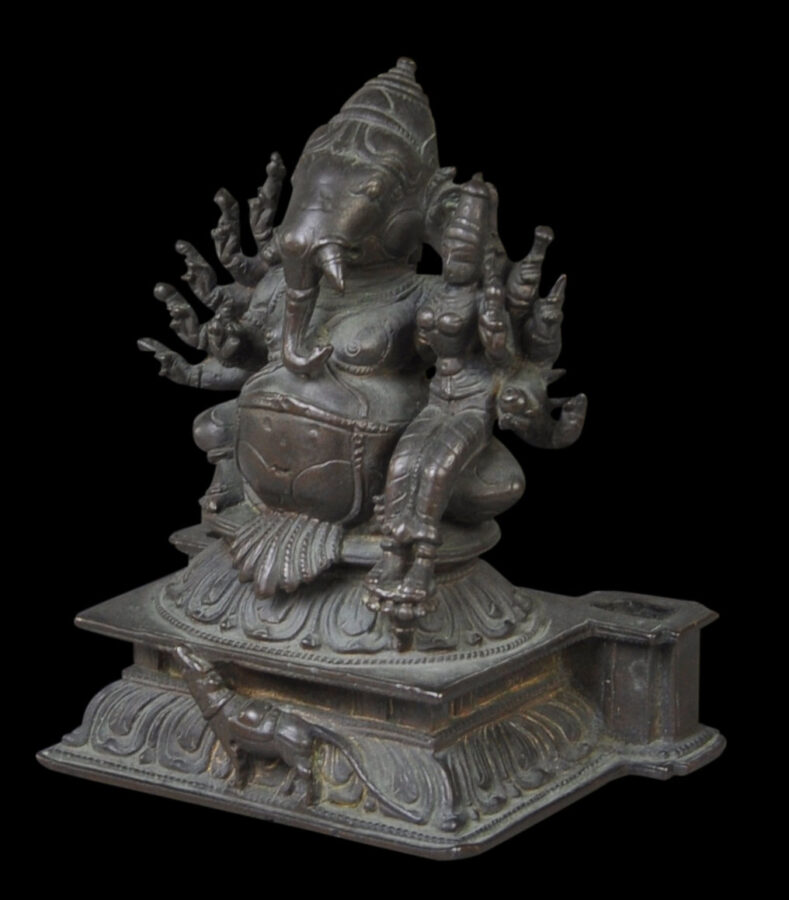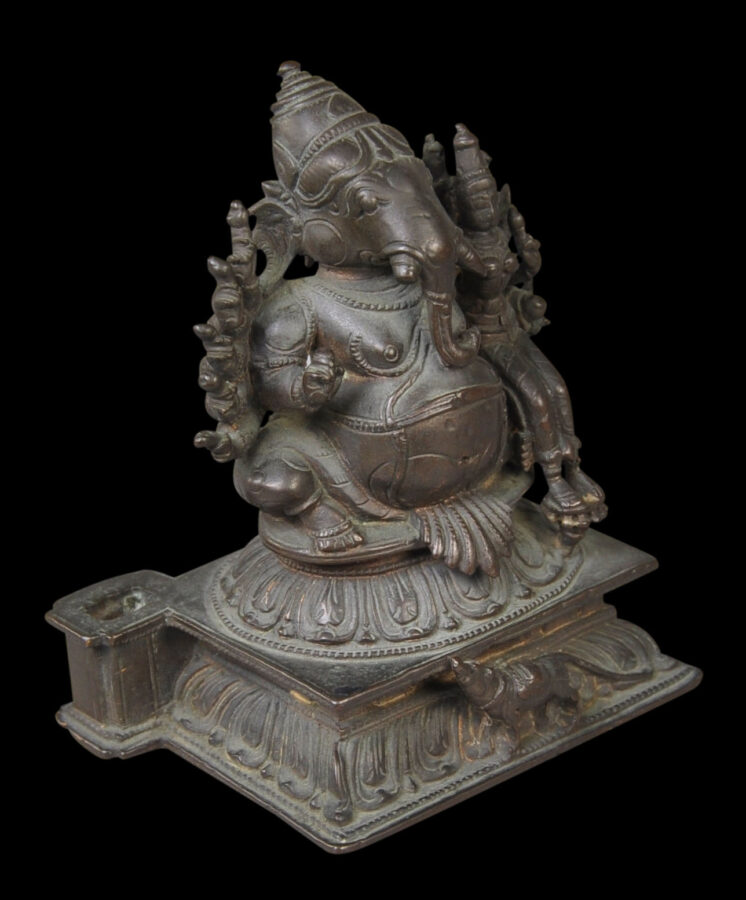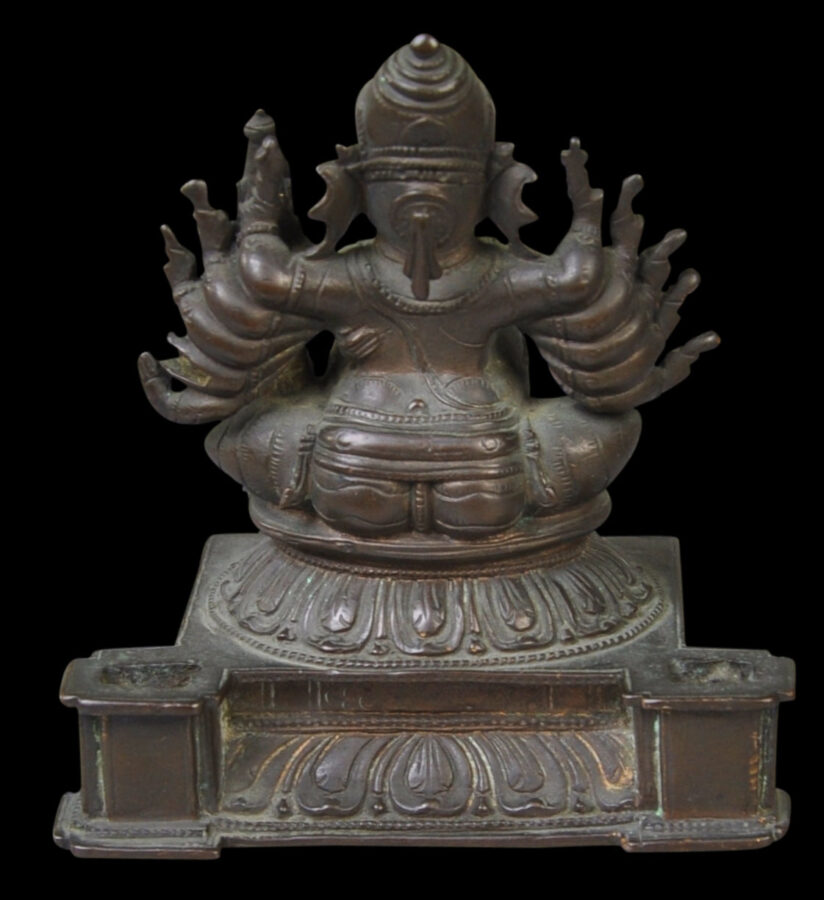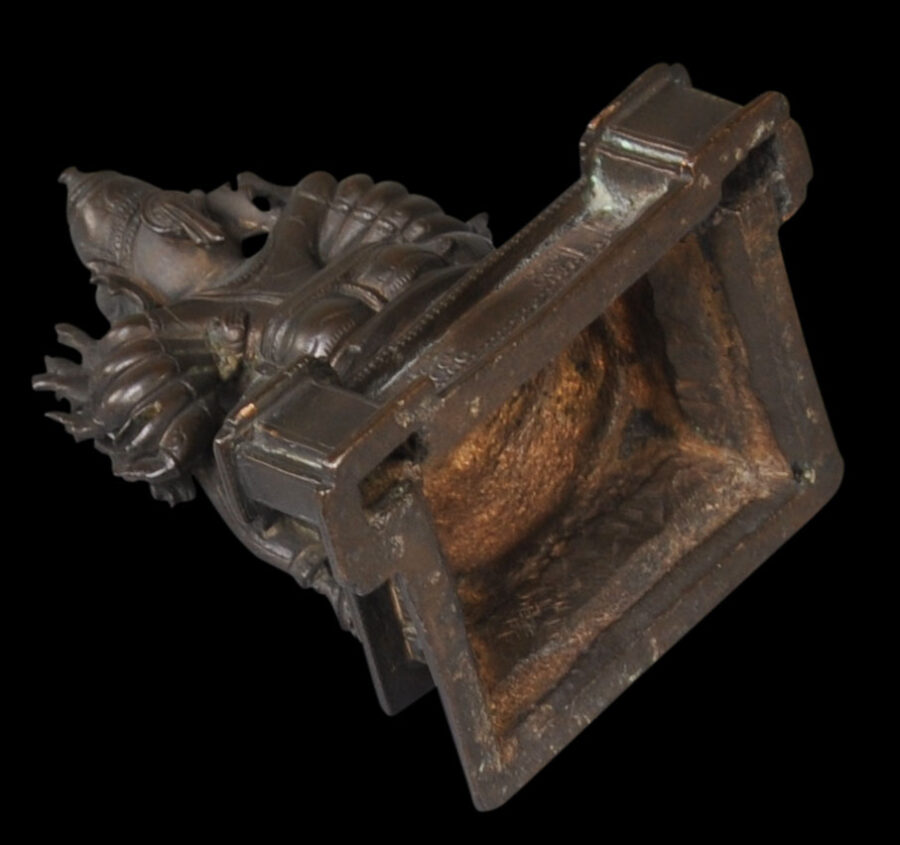The extremely finely cast bronze image of Ganesha is one of the finest, small images of the deity we have seen. The fineness is evident at every angle, including the reverse.
It shows the elephant-headed deity as Mahaganapati (literally ‘Ganesh, the Great’) seated on an oval lotus petal cushion on a rectangular pedestal also cast with lotus petals.
This aspect of Ganesha shows the deity as the Supreme Being Paramatman. Ganesha is shown with ten arms, each with an attribute, and with a shakti or female consort seated on his lap. She holds a lotus (a symbol of purity) in her left hand and hugs Ganesha with her other hand – her tiny fingers are beautifully cast, nestled onto his back.
Ganesha is shown with a swollen belly, a third eye, the right tusk broken, and a rounded, tiered crown. The trunk is striped or gadrooned down its length – an unusual characteristic in common with a dancing Ganesha images attributed to 16th century Karnataka illustrated in Pal (1988, p. 256).
Conventionally, Ganesha’s ten arms hold ten attributes which include a lotus, a pomegranate, a gada (mace), a chakra (discus), his own broken tusk, a pasha (noose), a jewelled water vessel or a pot of jewels, a blue lotus, a rice sprig, and a sugarcane bow. (One arm is now missing however, though this is barely apparent in the profusion.)
A rat has been cast in high relief at the front of the pedestal. This is Ganesha’s vahana, or celestial vehicle. The back of the pedestal has two cavities for the insertion of an aureole which is long missing, as is usually the case.
Mahaganapati represents Ganesha as the Supreme Being and is thus the most important deity of the Ganapatya sect (a denomination of Hinduism that worships Ganesha as the Saguna Brahman or supreme deity). This version particularly symbolises happiness, wealth and magnificence of Ganesha.
The bronze here has only minor puja or ritual wear. The features generally are crisp. There is a fine and varying patina. Overall, the casting of this bronze is at an extremely high level.
References
Pal, P., Indian Sculpture, Volume 2 – 700-1800, Los Angeles County Museum of Art, 1988.
Pal, P., A Collecting Odyssey: Indian, Himalayan, and Southeast Asian Art from the James and Marilynn Alsdorf Collection, The Art Institute of Chicago/Thames & Hudson, 1997.
Pal, P., Art from the Indian Subcontinent: Asian Art at the Norton Simon Museum, Yale University Press, 2003.


